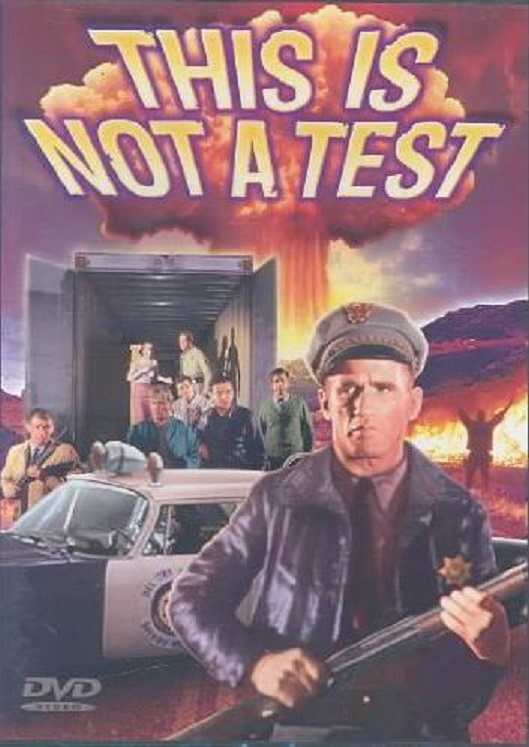A boring film of 1 hour and 13 minutes about a nuclear apocalypse. It is marked as 5.5/10 from 557 time wasters.
A highway patrol officer in the Alabama Hills near Los Angeles is ordered by radio to set up a one-man road block in the middle of nowhere because a fugitive is about. He complies.

For nowhere there is lot of traffic and each time he orders the driver to stop, pull over, and wait without a word of apology or explanation. Send him back to the training course, cried the fraternity brothers. The motorist are varied.
Yes, this the Otranto roadblock where a mixed group of individuals are thrown together by larger, external events and must interact with each other. A disaffected wife sneaks off into the bushes, unbuttoning her blouse with the virile truck driver, a worried businessman has to fly to Mexico, a drunken socialite wants more liquor and her ageing beatnik boyfriend wants to match macho with the police officer who promptly clocks him with a rifle butt. This is a man of few words.
Copper forbids them from returning to their vehicles and has pocketed all their keys, hence no one can listen to commercial radio. The only source of intel is the police radio which begins to talk about evacuation of the city with the title phrase, ‘This is not a test.’ Everyone of a certain age will recognise the title as the Conelrad alert for atomic armageddon. Sixty minutes is mentioned as the time to….. Transmission ends.
The police officer redoubles his efforts to keep the party together, get those two out of the bushes, whack some sense into the would-be beatnik, kill the socialite’s annoying dog by strangling it, and coerce the truck driver and his off-sider to empty the truck. Why? So that it can be used as a bomb shelter! Yep. Well it is better than nothing. That was one training course he did.
So they crowd into the Otranto moving van truck which just happens to have a supply of canned food and bottled water, well beer. There was not much bottled water in 1962. Everyone in the truck feels sorry for themselves and has to decide how to live the remaining hours of their lives. Mostly they stand around saying that. They need an agenda and chair to focus the discussion. They need a McKinsey-speak manager to confuse things properly with micro-managed KPIs.
One hopes that in the truck’s supplies there is plenty of deodorant, because they may have to stay there for months. So it is said. It varies between oblivion in sixty minutes or months of waiting while the radiation dissipates, and that seems to be realistic in a way. Who knows? Who has tried to sit out a nuclear war in a truck before?
In 1962 nuclear war was a reality though the Soviets are never mentioned, and there is no chest-thumping about the American way in the back of the truck. Ergo it is certainly of the time but subdued. There are many films with a similar setting, like ‘Five’ (1951), ‘Alas, Babylon’ (1960), ‘Ladybug, Ladybug’ (1962), and more. Each of these three has a lot to offer.
Like many of those other films this one is intended to be a taut character study, but, well, it never had a theatrical release, not even for the triple feature drive-in market, where the cheap schlock was always welcome, and it is easy to see why. It is not taut though it is confined like a stage play. The writing does not produce or reflect tension though it is combative. The characters are so shallow, who cares. The more so when compared to the films named above. It seems to be the only credit for the director, screen writer, producer, and lead actor. The cinematography is either bleached or shadowed.
The Easter Islander playing the lead is monosyllabic and seems to have no inwardness. Some the players are familiar like Thayer Roberts, the farmer driving a crop to market and Norman Winston as the husband who shoots himself, not at the prospect of incineration but because it was his wife off in the bushes with the truck driver. In the hills the fugitive is still after the one-armed man.
However, despite its qualities, the film brought back a lot of unpleasant memories from that time and place when nuclear Armageddon was a prospect. The drills in school. The repeated testing, as in ‘This is a Test’ of the Conelrad network. The public service announcements on television about taping windows in preparation for annihilation. The ominous announcements in October 1962. Then there was the ordinary high school day when we were sent home early without explanation. Gulp! I have never been able to watch ‘The Day After’ (1983) because I thought I would relive that.
Skip to content
